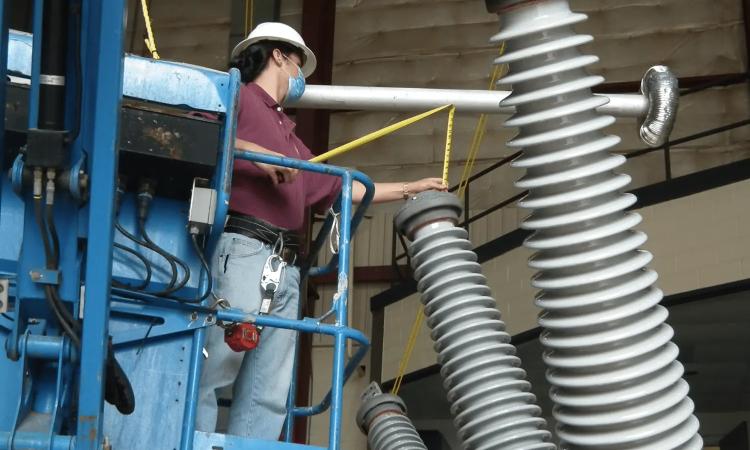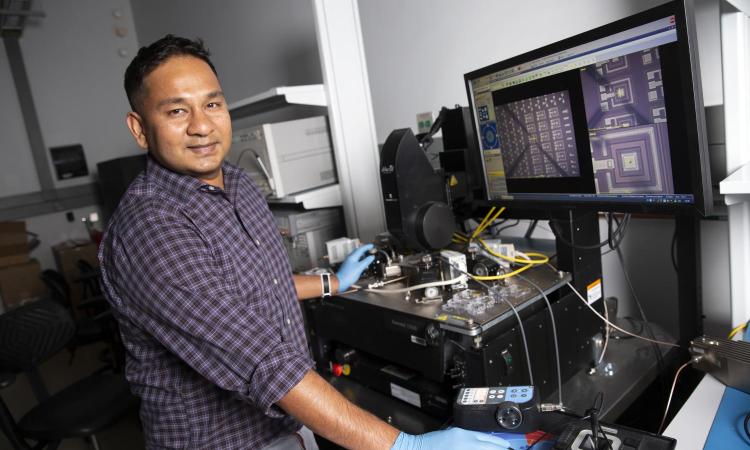At Thanksgiving, we rarely consider the foundational technology powering the celebration. From the power grid to semiconductors, electrical and computer engineering quietly enables the comfort and abundance we enjoy.
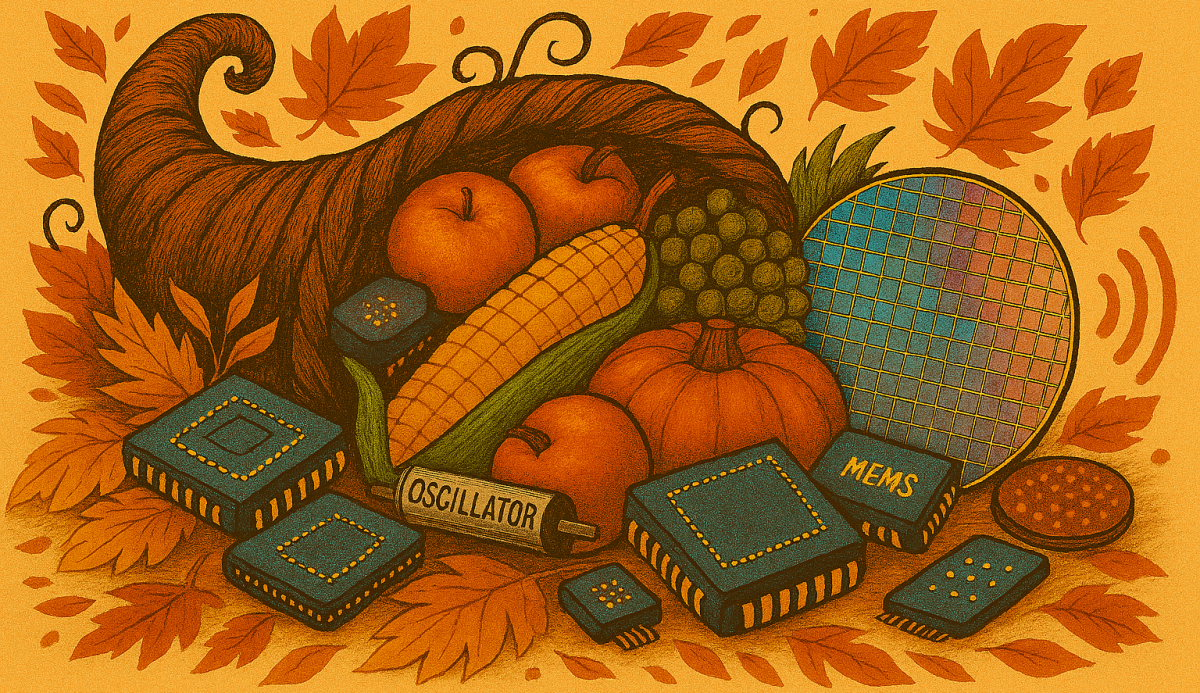
(text and background only visible when logged in)
When we think of Thanksgiving, we picture golden turkeys, warm pies, and family gathered around the table. Rarely do we think about the technological foundations that make these moments possible.
Behind every roasted bird and every video call with loved ones, there’s a world of electrical and computer engineering working quietly in the background.
This Thanksgiving, let’s give thanks to the essential technologies and systems that make modern life possible, and for the innovators at Georgia Tech who help create them.
(text and background only visible when logged in)
1. Power Grid
The Vast Network That Powers Comfort and Connection
Before the turkey goes in the oven, electricity moves through a vast network of generators, transformers, and transmission lines. This system balances supply and demand in real time across thousands of miles.
The U.S. grid spans more than 600,000 miles of transmission lines and serves 150 million customers daily with reliability above 99.97%, according to the Department of Energy. But it’s also changing fast. Renewables like solar and wind, along with electric vehicles, are driving researchers to reimagine how the grid can keep pace.
The challenge is on full display during Thanksgiving, when ovens, stovetops, refrigerators, and heating systems run at full tilt.
“Today’s grid is bigger and more complex than ever,” Associate Professor Daniel Molzahn said. “We’re building smarter technologies with predictive analytics and adaptive controls to manage this complexity. The ultimate goal is to create a more secure and more reliable grid, especially on the busiest cooking day of the year.”
Did you know?
The Georgia Tech School of Electrical and Computer Engineering leads the National Electric Energy Testing, Research and Applications Center (NEETRAC), a leading research and testing resource for the electric energy sector?
NEETRAC supports improving grid efficiency, resiliency, reliability, and safety by collaboratively developing actionable knowledge for industry partners.
2. Semiconductors
The Core Technology That Drives the Digital World
Every modern Thanksgiving technology relies on semiconductor chips made from materials like silicon that conduct electricity in precisely controlled ways. That property lets engineers build transistors, tiny switches that turn signals on and off to represent 1s and 0s.
From the relatively simple chips in everyday kitchen devices to the billions of transistors packed into processors powering the AI era, semiconductors make it all possible.
They are essential to modern life and the global economy. Nations invest heavily in chip research and manufacturing because these devices drive innovation, productivity, security, and growth.
“Building an advanced semiconductor product is one of the most engineered feats in history, demanding breakthroughs in material innovation, device architecture, chip design and advanced packaging,” said Suman Datta, a Georgia Research Alliance Eminent Scholar and Joseph M. Pettit Chair in Advanced Computing. "As semiconductors grow smaller and smarter, Georgia Tech researchers are pushing the boundaries of what’s possible, ensuring the technologies of tomorrow start here.”
(text and background only visible when logged in)
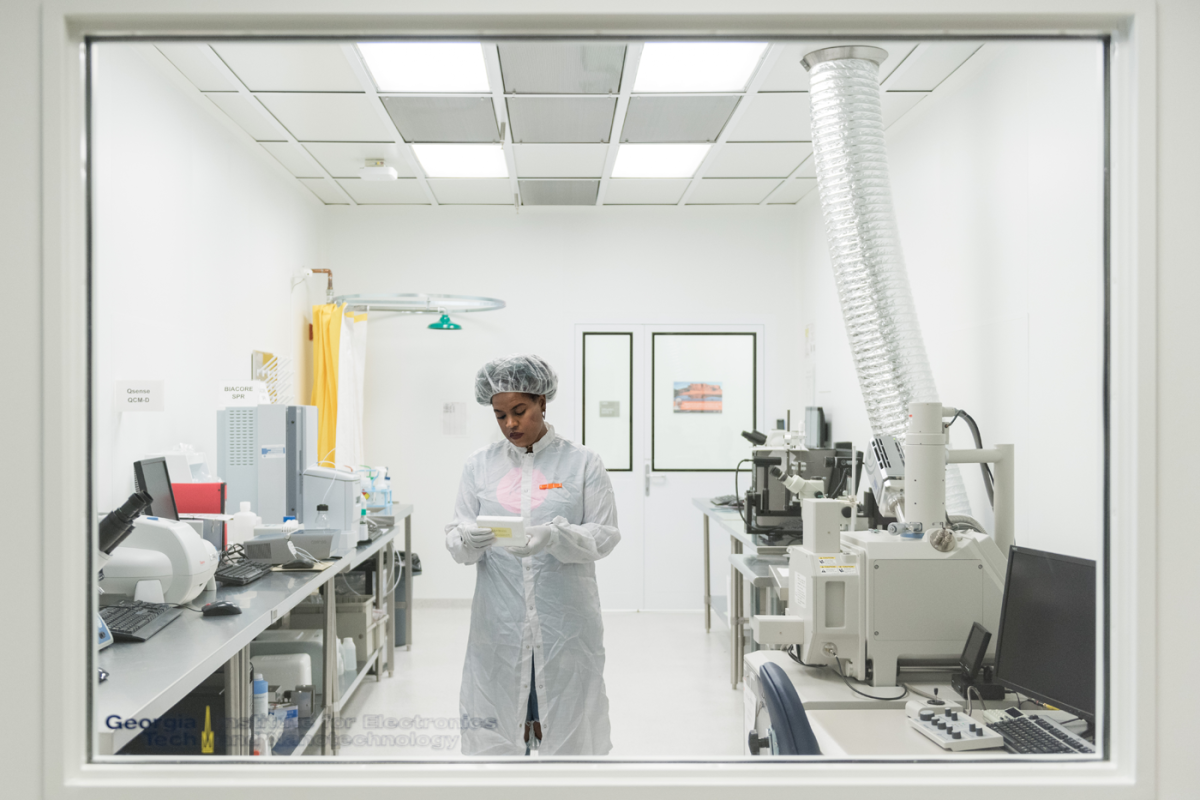
Georgia Tech is a national leader in semiconductor research and home to the Southeast’s largest cleanroom facility, featuring 10,000 square feet of state-of-the-art space for nanoelectronic device fabrication in the Marcus Nanotechnology Building.
3. Oscillators
The Timing Systems That Keep Everything in Sync
Every processor, network, and streaming service relies on precise timing. A clock signal keeps your oven timer accurate, your video calls in sync, and your football stream smooth. Timing systems ensure that complex operations happen in perfect harmony.
At the heart of this process is an oscillator, a tiny component that vibrates at a steady frequency when powered. That signal becomes the system’s reference clock. From there, phase-locked loops (PLLs) multiply, adjust, and distribute the signal so every part of the system—from processor cores to network interfaces—stays aligned.
A modern processor executes billions of instructions per second that must stay in step. One slip and the system falters. Synchronization is what makes everything work.
"Cosmic cycles, circadian processes, and even quantum vibrations seem to shape the natural world," Steve W. Chaddick School Chair Arijit Raychowdhury said. "That same principle of rhythm and repetition keeps modern computing systems in sync."
(text and background only visible when logged in)
Cosmic cycles, circadian processes, and even quantum vibrations seem to shape the natural world. That same principle of rhythm and repetition keeps modern computing systems in sync.
Arijit Raychowdhury
(text and background only visible when logged in)
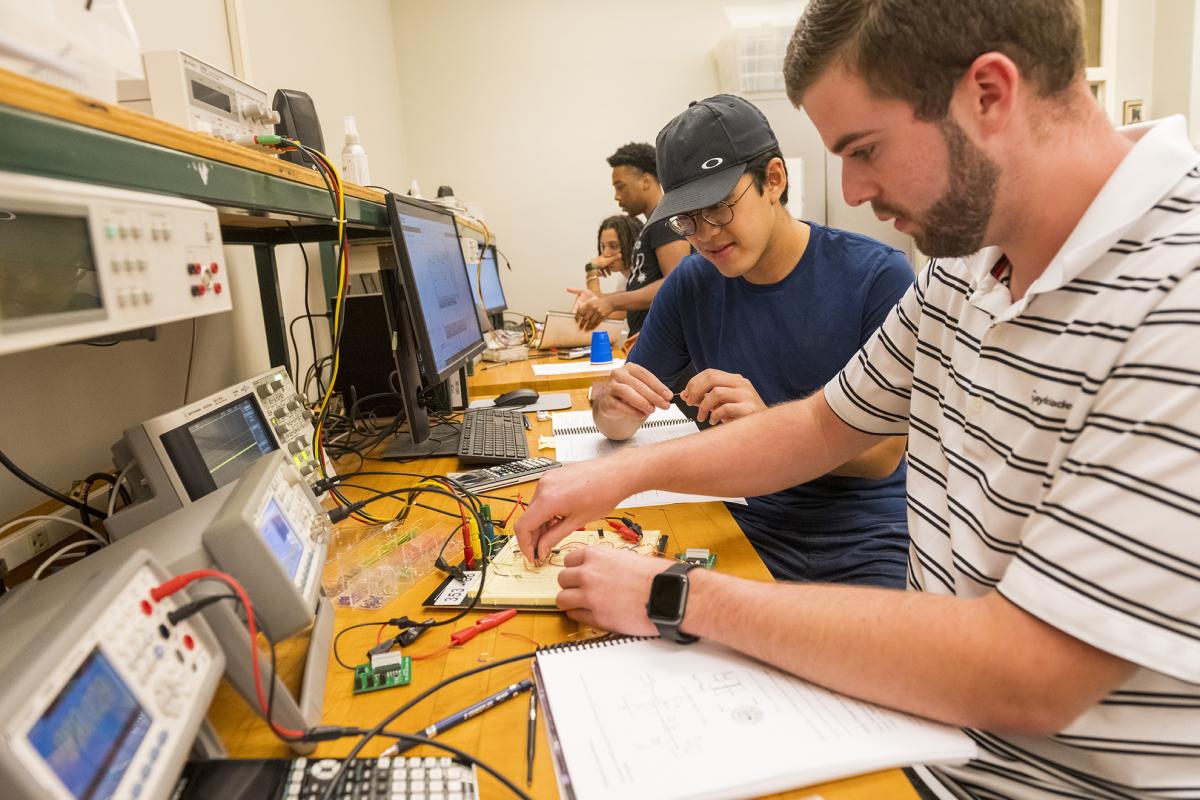
Microcontrollers are at the heart of electrical and computer engineering. In labs, students work to design, program, and integrate them into real-world systems.
4. Microcontrollers
The Embedded Engines of Everyday Life
Microcontrollers are everywhere, powering the devices we depend on daily.
A microcontroller is essentially a small computer on a single chip, integrating a processor, memory, and input/output interfaces. Its job is to read data, run programs, and make rapid decisions. Unlike general-purpose processors in laptops, microcontrollers are designed for one specific task within an embedded system—such as timing a dishwasher cycle or maintaining precise oven temperatures.
This specialization makes them efficient and reliable for real-time control. They’re the backbone of modern automation, making everyday life—and holiday cooking—simpler and more consistent.
“Microcontrollers are foundational because they’re a key link between hardware and software,” Professor David Taylor “We teach them through hands-on labs and projects, so students learn to program real devices and see how sensors, actuators, and smart algorithms come together.”
5. MEMS
Giving Technology Its Senses
If microcontrollers are the brains, MEMS—Micro-Electro-Mechanical Systems—are the senses.
At their core, these tiny sensors use microscopic moving parts etched into silicon to detect physical changes—such as pressure, motion, and sound—and convert them into electrical signals that microcontrollers can interpret.
They guide airplanes and satellites, enable life-saving automotive safety systems, power medical devices, and monitor industrial processes.
And they’re now crucial in everyday devices. Your smart thermostat maintains a cozy setting while guests gather, adjusting based on MEMS readings of temperature. The voice assistant playing your holiday playlist depends on MEMS microphones for clear sound. Even your fitness tracker relies on MEMS accelerometers to log every step of your post-holiday workout.
“Smart isn’t magic—it’s MEMS," said Regents Entrepreneur and Texas Instruments Termed Professor Jennifer Hasler. "These tiny systems turn the physical world into data, so technology can respond in ways that matter."
(text and background only visible when logged in)
(text and background only visible when logged in)

Hasler, a pioneer in analog techniques for neuromorphic computing, in the lab guiding research activities.
Related Content
The Promise of Technology
Through robust collaboration, world-class expertise, and impressive scale, ECE's research enterprise consistently develops technologies that transform industries and improve lives.
(text and background only visible when logged in)
Engineering the Car of the Future
ECE experts look to the future of the automotive industry, and how new technology will not only transform vehicles, but reshape the power grid, influence policy decisions, and impact numerous aspects of society.
(text and background only visible when logged in)
